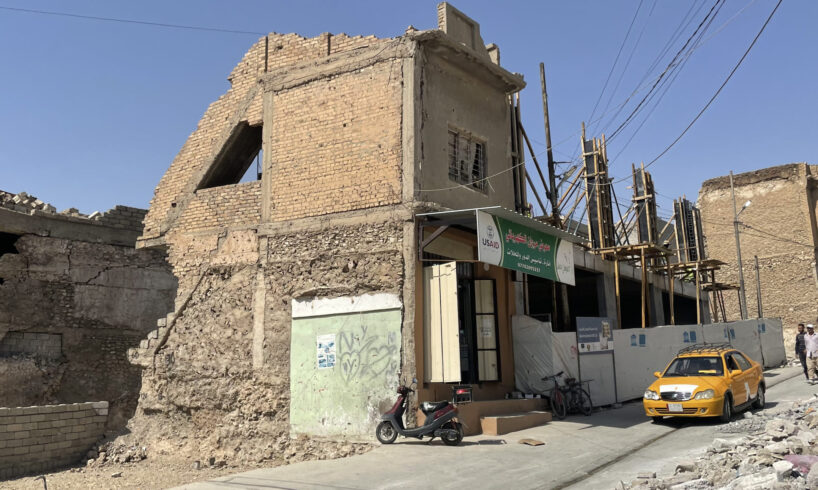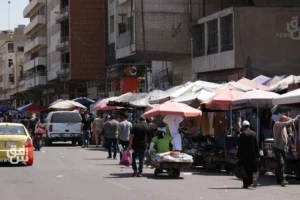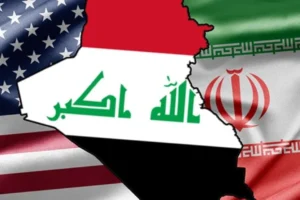
Over 130 countries across the world have placed limits on international and foreign-funded NGOs, as donor fatigue and shifting geopolitical priorities take hold, global funding is reallocated with INGOs and major UN agencies scaling back or exiting entirely from countries they once operated in, and shrinking a much-needed civic space.
Funding cuts are severely impacting women and women’s rights organizations in crisis-affected areas regardless. According to a UN Women report, in March 2025, 90% of 411 surveyed partner organizations across 44 countries have already felt the effects, and nearly half risk shutting down within six months. Six months have passed now, and we already see it in effect. These organizations provide vital services like healthcare, shelter, and support for survivors of violence against women and girls, yet they receive less than 1% of global aid, and even after receiving it, disparities exist between amounts of grants received and what reaches targeted populations.
Following the 2003 US-led invasion of Iraq, Iraqi women, and women’s rights actors have built a vibrant civil society presence, forming networks, influencing policy, and engaging in political processes. Despite constitutional quotas and international support, their progress has been hindered by conflict and internal divisions, and limited resources. Grassroots activism addressed major issues and younger women pushed for leadership and reform, calling for coalition-building, expanded networks across civil society, targeted international support, and a shift away from “stabilization” rhetoric toward long-term development and equality goals for women and girls.
As Iraq navigates a shifting regional order and continued job market frictions with the shift in global aid architecture, the promise of long-term development and economic recovery is increasingly shadowed by layered crises. Not those unfolding in headlines but in households, eliminating ambitions of half of the population, Iraqi women are once more finding themselves edged out of the workforce. In this essay, I ask, what happens if and when the few doors that once offered them a foothold in the workforce begin to close? And how have humanitarian and development programming been affected?
INGOs, NGOs, and localization in Iraq: when did it all start?
Over the past two decades, Iraq has been one of the most aid-dependent contexts in the region. The fall of the regime in 2003 opened space for international engagement and a flood of foreign assistance, INGOs and local NGOs have played central roles in humanitarian relief and recovery. Ever since, the country’s aid landscape has shifted in response to successive crises, the ISIS conflict from 2014 to 2017, and the COVID-19 pandemic in 2020. Each reshaped how aid was delivered and reignited debate about the role of INGOs, local NGOs, and the unfinished agenda of localization.
The INGO Footprint was imminent, as they quickly became dominant and irreplaceable in the system, bringing global expertise, donor trust, and large-scale operational capacity. Their presence expanded even further after ISIS seized territory in 2014, displacing millions. INGOs launched major humanitarian operations, managing large budgets and complex responses. Critics argue the NGO-izing of every other problem after the collapse of state institutions in Iraq post 2003, has sidelined grassroot voices, formed the civic space top-down, and turned social movements into-service delivery mechanisms. The societal perception on the other hand, has often been inaccurate as INGOs and local NGOs were seen only as relief organizations and civil society institutions that need domestic as well as international support.
When funding was overflowing between these crises, little aid reached local organizations. Much was taken up by international overhead, salaries, systems of compliance, and headquarters expense. Whereas INGOs guaranteed donor accountability, local agents remained under-resourced, and encountered barriers like administrative hurdles, outdated tax laws, exchange rate volatility and most opportunities flow through INGOs while local NGOs have limited direct access resulting in donors impeding their own impact, as trickles of funding are giving local NGOs just enough to implement short and medium-term projects, but not enough to invest in improving and becoming financially independent,” as reported by The New Humanitarian. Nevertheless, one expert noted, there is still a clear need for INGOs to provide technical support to local NGOs in Iraq. While local actors are well positioned to access remote areas and play a strong role in coordination, they often lack the necessary technical expertise and strategic capacity and have limited understanding of compliance requirements.
What do women think?
The cut has also disproportionately impacted women in urban centers who were employed by these INGOs/NGOs and where offices were concentrated, for most educated women, this sector was the only real foothold in the formal labor market. At the same time, there is an “experience cliff” that can be career-ending before it starts and is hardly spoken of, a recent analysis showed that only 2.9% of jobs available on the market are truly entry-level, and nearly 90% require a bachelor’s degree, a threshold many women, particularly those outside urban centers, struggle to meet. According to Bahar Aljammor, who’s been working on donor funded programs in Iraq for over 12 years, devising business strategies in post-conflict areas and leading organizational change, women who entered the workforce through INGOs/NGOs operated often in safe and inclusive environments that offered professional development and leadership pathways. With these opportunities gone, a significant number have not been able to transition into other sectors.
She recalls one moment that stood out during her work with USAID-funded programs, where she met a group of highly skilled women working on donor-supported initiatives in provincial offices. These women were leading local campaigns, managing grants, and engaging with decision-makers in roles they had never had access to before. Yet they openly shared their fears that once donor funding ended, their opportunities would vanish because the labor market was not ready to absorb them. Another female development practitioner, who’s been in the sector for more than 15 years working on Protection and Education programs shared similar sentiments and feared that these women will have no other place to go or will be downgraded if they do.
Bahar also argues that what has been lost by the decline of NGOs will crack down the existing structure and will limit opportunities for the younger generation of women. Integrated programming and targeted capacity strengthening with long-term impacts was crucial, especially the ones combining skill development with leadership exposure, such as program management, Monitoring Evaluation and Learning (MEL), advocacy, and technical training roles in governance, education, and economic empowerment. Bahar herself has played a direct role in shaping such programs, including designing women’s leadership pipelines, embedding gender-sensitive MEL frameworks, and advocating for equal pay.
The contraction of the humanitarian-development sector is more than a funding shift, she adds. “It is an economic shock to women’s workforce participation in Iraq” and without deliberate strategies for offering alternatives, we risk losing a generation of skilled female professionals. The consequences of this sectoral retreat dismantle the enabling infrastructure that allows women to enter or remain in the workforce. Other local voices emphasize, “The retreat of INGOs has significantly affected both women and men, but particularly women. This is because Iraq is currently in a development context that requires government involvement, and in most cases, the preferred counterparts are men”.
What about humanitarian and development efforts in Iraq?
Humanitarian and Development programs, particularly those led by INGOs with strong localization strategies and women-led organizations, had increasingly stepped in to bridge these deficits, they offered pathways that Iraq’s state-run institutions failed to provide, temporarily countering the structural limitations that hinder women entering the workforce. The impact of the change in aid dynamics did not stop at disrupting projects, but also directly affected women’s rights and services provided to survivors of domestic violence and victims of abuse. INGOs/NGOs have, for years formed the first line of defense and their inactivity has immediate impacts such as reduced opening hours, disruptions to safe transport as immediate impacts, slower follow-ups on complex legal case management referrals, fewer counseling sessions and suspended legal aid on protection/alimony/custody.
The New Region examined the impact of US foreign aid 90 days freeze in particular on women’s rights and Iraq’s civil society earlier this year. One worker in the field recounted how women who had regularly sought help from their centers felt abandoned, saying, “They used to say to us: You are our only hope. Now even you are going to leave us?” When programs were put under comprehensive review, legal complexities were also created as the Iraqi law does not permit temporary suspension of contracts, it mandates either officially terminating contracts or continuing to pay salaries. Some terminated contracts and paid an additional month’s salary as compensation, others had to navigate the path of paying for seniors entitled to end-of-service benefits.
Aya Mansour, a freelance journalist and the author of the abovementioned article added that this created an overnight cash-flow gap for local partner organizations, especially small, women-led groups that rely on monthly tranches to cover direct services. Aya continued, “Programs tackling violence against women and girls are among the most dependent on U.S. funding, and the abrupt stop directly hit safe spaces, hotlines, and legal/psychosocial programs run by women’s organizations. And the implications over the next 1–2 years would be stricter compliance in the funding environment with a tilt toward basic relief over rights and community empowerment.” Aya also shares insights on existing community peer-support circles that slow the collapse rather than replace fully functioning NGOs supporting disadvantaged women and girls. A sustainable alternative must be locally led and diversified, this includes establishing national and regional pooled funds and tapping into domestic revenue sources like private-sector contributions, zakat, and Iraqi diaspora support.
Where are we now?
As the sector continues to shrink and is being shaped by regional challenges, the path forward must be rooted in both realism and reform. While the localization agenda holds promise, it cannot succeed without addressing the gaps that hinder local NGOs, from limited technical capacity to governance challenges that erode donor trust. Women’s organizations, on the other hand stand at a crossroads, and have demonstrated resilience but remain vulnerable to funding volatility. A sustainable future for Iraq’s civil society will require a deliberate investment in local leadership, and transparent systems that can weather political shocks and deliver impact.





